Architect Tsukasa Ono designed this housing venture on Japan’s Yakushima island to have a optimistic influence on its pure setting, utilizing a “regenerative” method to enhance the soil by selling the expansion of mycelium and micro organism.
Sumu Yakushima is a group created by eight co-owners and located on a hillside web site forming a part of a farm with views in direction of the ocean.
Tsukasa Ono advised Dezeen that he and two associates developed the thought for the venture in 2020 whereas Tokyo was in lockdown in the course of the Covid-19 pandemic.
“We had been quickly residing at my buddy Yuki Imamura’s lodge on Yakushima island,” Ono recalled. “We began to make an idea for a small venture however it was so thrilling that the venture saved getting greater so we accepted some extra good associates to affix us.”
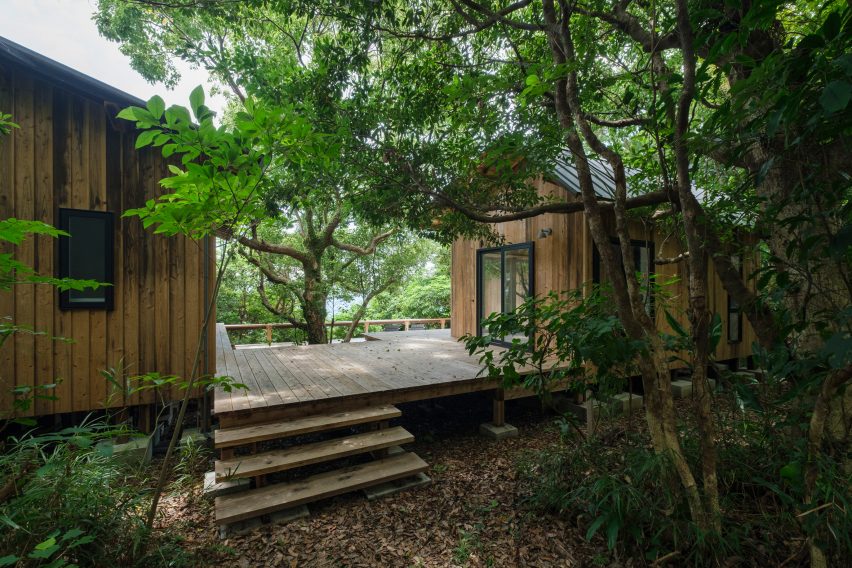
Ono is the one architect in the neighborhood and was answerable for the design idea. Different members have completely different abilities, together with as venture managers, monetary consultants, environmental consultants and power specialists.
“We talked lots about concepts and mentioned many instances what our future life right here could be like.” Ono defined. “I feel this venture solves many facets of right this moment’s issues on Earth.”
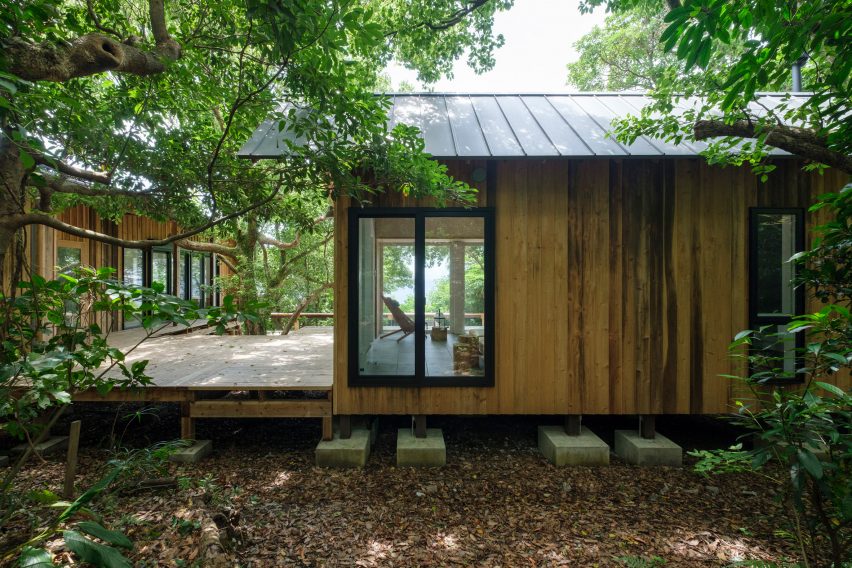
The land the group is constructed on is owned by one of many members. The location and format of the buildings had been decided following an intensive appraisal of present tree positions, water circulation and different environmental elements.
The venture seeks to minimise its influence on the land and makes use of a precept that Ono calls “regenerative structure” to reframe the connection between human habitation and nature.
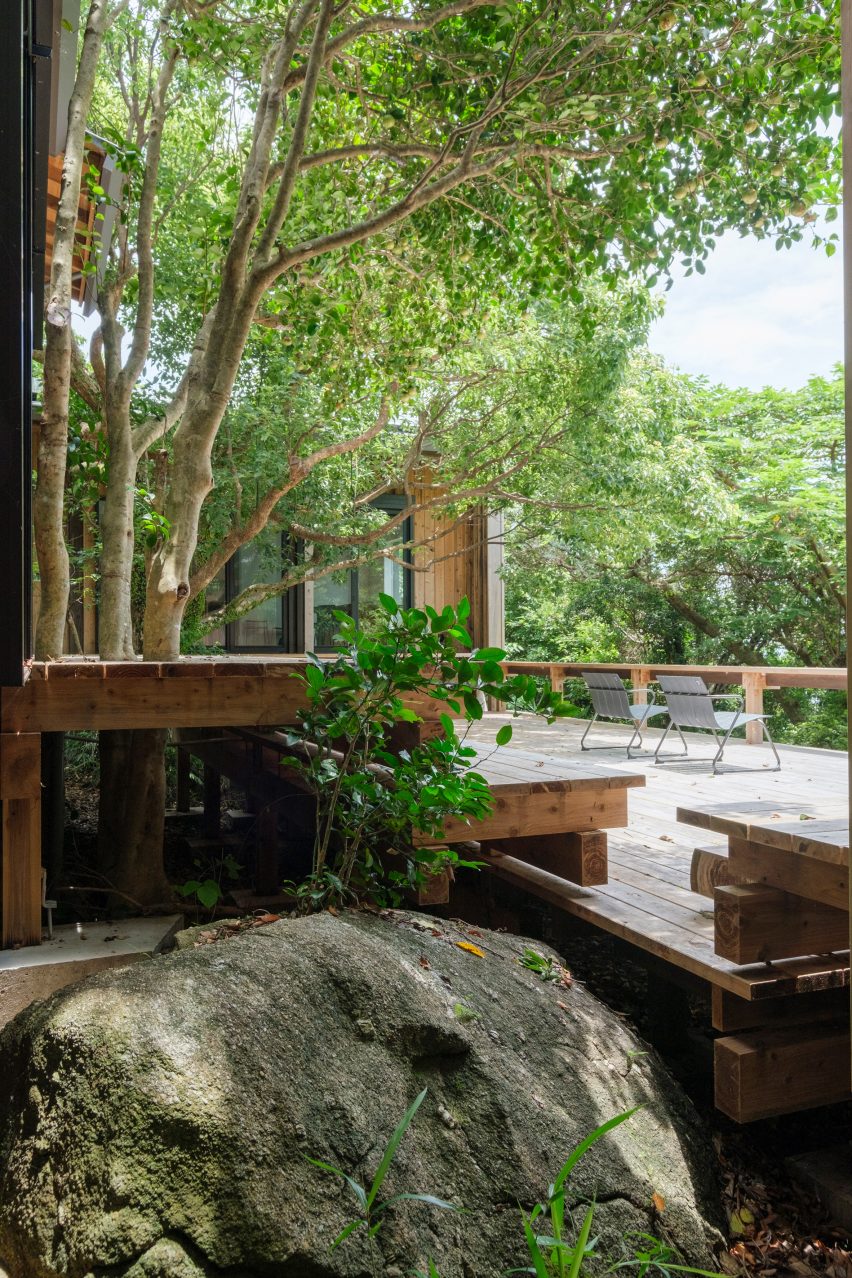
This method combines conventional Japanese civil engineering with up to date know-how to create buildings that adapt to their environment and contribute positively to the expansion of crops and different organisms.
The buildings nestle among the many present timber and are elevated above the forest ground to advertise the pure circulation of air from the hills to the ocean.
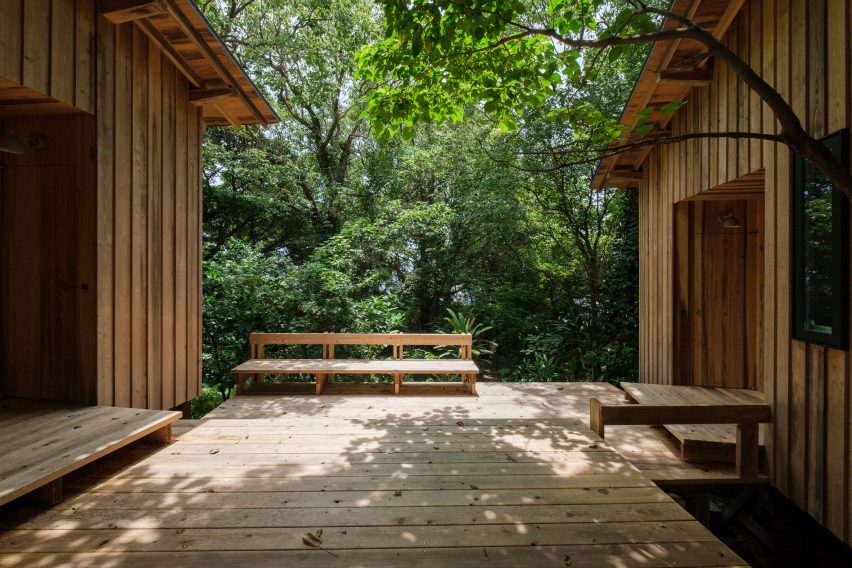
Wood piles with charred surfaces are pushed into the soil beneath the foundations of every constructing. The carbonised wooden promotes the expansion of mycelium (fungal threads), which inspires tree root development and helps strengthen the soil.
Ono is a specialist in using micro organism and fungi in structure and believes the right implementation of those ideas can enrich nature, whereas additionally making buildings extra sturdy and cozy.
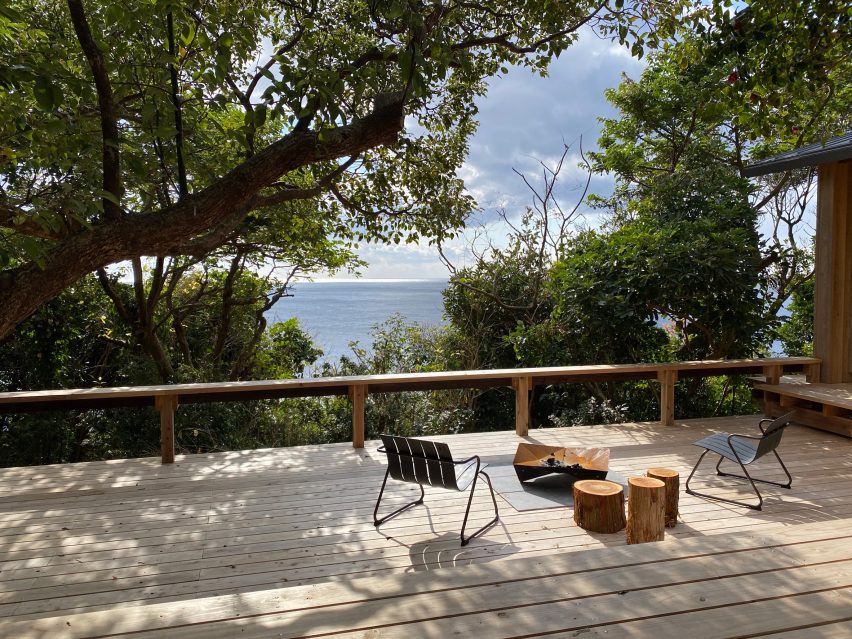
“Sumu’s regenerative constructing methodology retains the microorganisms within the soil alive,” he factors out, “and by activating the micro organism, the substitute constructing can join with the pure community.”
“By doing so, it’s potential to assist one another with the encompassing atmosphere and alter the atmosphere extra positively.”

Ono additionally used a fermented plaster for the inside partitions and flooring that was made by mixing charcoal and a particular sort of micro organism. The plaster helps to create a steady inside atmosphere by stopping mould and different putrefactive micro organism, in accordance with the architect.
The Sumu Yakushima buildings function comfy residing areas which are hermetic and extremely insulated, minimising the necessity for synthetic heating and cooling. All power is generated by photo voltaic panels and saved in batteries, with native firewood used for heating and cooking.
The buildings make use of native Yakushima cedar, which is richer in oil than cedar from different areas, making it sturdy and appropriate for exterior use in Yakushima’s wet, humid local weather.
The location plan includes a number of cabins which are related by out of doors paths. A few of the cabins comprise communal services together with the lounge, kitchen and eating space, whereas others are used for personal lodging.
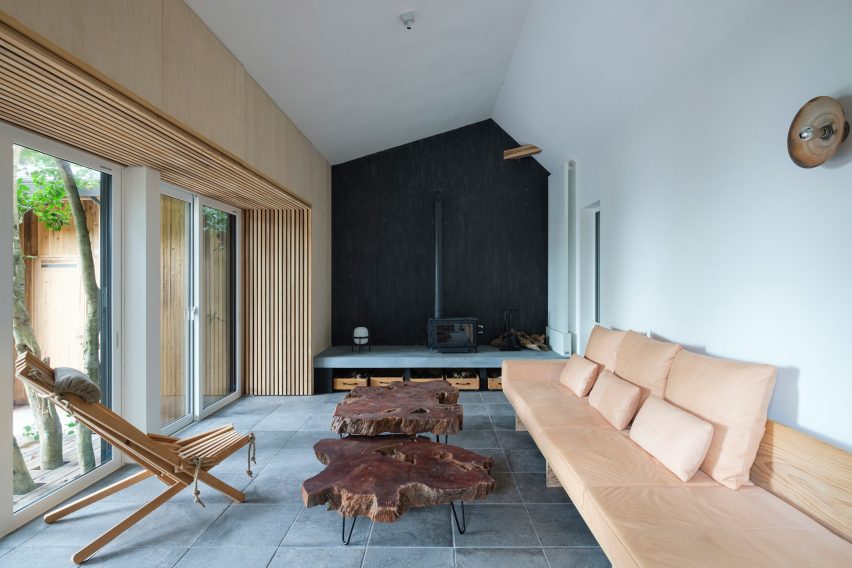
Massive out of doors decks enable the inhabitants to really feel immersed of their environment, whereas the necessity to stroll by the forest to carry out actions like cooking or bathing enhances this reference to nature.
The co-operative’s residents additionally undertake a “regenerative life-style”, which includes actions corresponding to accumulating driftwood to be used as firewood and clearing grass to enhance the location’s airflow.
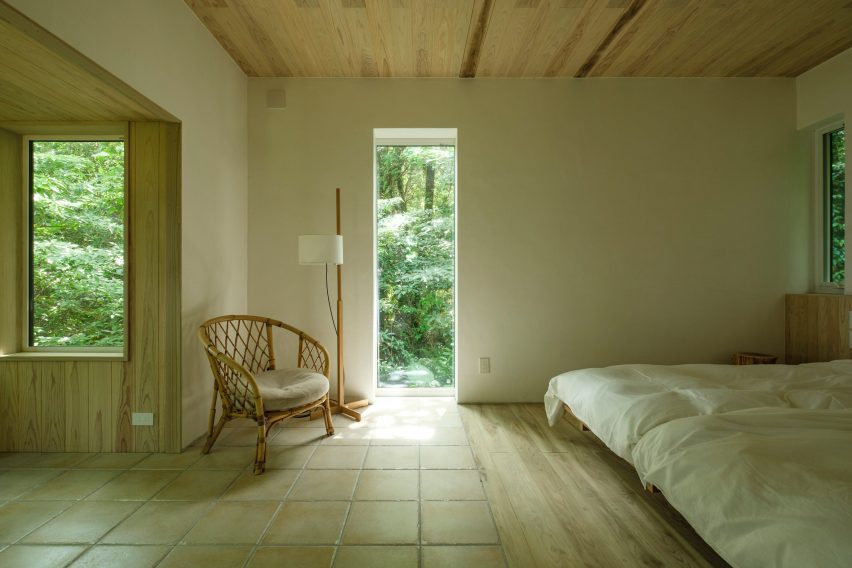
Ono says these duties create a stronger sense of group spirit, in addition to serving to the pure atmosphere to flourish and mitigating any destructive impacts from development.
“Because the Industrial Revolution, people have destroyed and consumed nature,” the architect added.
“If this regenerative structure spreads all through the world, I imagine that the worldwide atmosphere will get well at an astonishing pace. Probably the most modern thought is the change of structure from destructive influence to optimistic influence.”
Different latest tasks within the Japanese countryside embody a Shigeru Ban restaurant constructed from thatch and cardboard and a vacation house by a nationwide park.
The images is courtesy of Tsukasa Ono.

